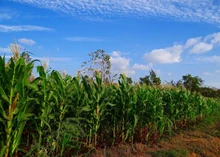
India's masoor dal imports are witnessing a significant upswing as restaurants, dhabas, and canteens are increasingly adopting a cost-effective alternative to arhar dal in their dishes, particularly in sambar and dal preparations.
With a price tag 60-70% lower than arhar dal and comparable in taste and texture, masoor has rapidly become a favored replacement for arhar in institutional settings. A considerable number of restaurants now use either fully or partially masoor dal instead of the traditional arhar dal recipe when preparing dal or sambar.
The recent fluctuations in arhar dal prices, ranging between Rs 150-200/kg, have prompted restaurants and canteens to make the prudent switch to masoor dal (red and yellow lentils) for preparing dal and sambar. Despite a commendable increase of approximately 25% in India's domestic production, the country is still anticipated to witness a surge in masoor imports.
Satish Upadhyay, a pulses importer, mentioned to the media that despite the boost in Indian production, the preference for masoor over the more expensive tur dal would likely result in increased imports during the ongoing fiscal.
It was pointed out that India's masoor imports had shown a steady upward trend over the past 15 years, and the country had been sourcing lentils from Australia, Canada, and Russia. According to Upadhyay, there had been a remarkable growth in the number of lentil processing units dealing with masoor in the Mumbai region alone. He explained that the region had only a few units a decade ago, but the number had increased to about 10-12 units now.
In a recent move, the Tamil Nadu government has adjusted the composition of pulses for the state's civil supplies program, increasing the proportion of yellow lentils while reducing the quantity of tur dal it intends to purchase.
Data from the Indian Pulses and Grains Association (IPGA) reveal that the escalating prices of tur dal have caused a decline in demand, leading consumers and the hospitality sector to opt for more affordable pulse varieties like masoor dal, chana dal, and batri dal.











